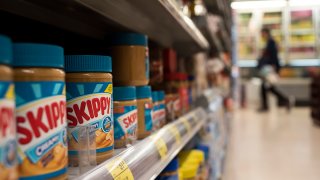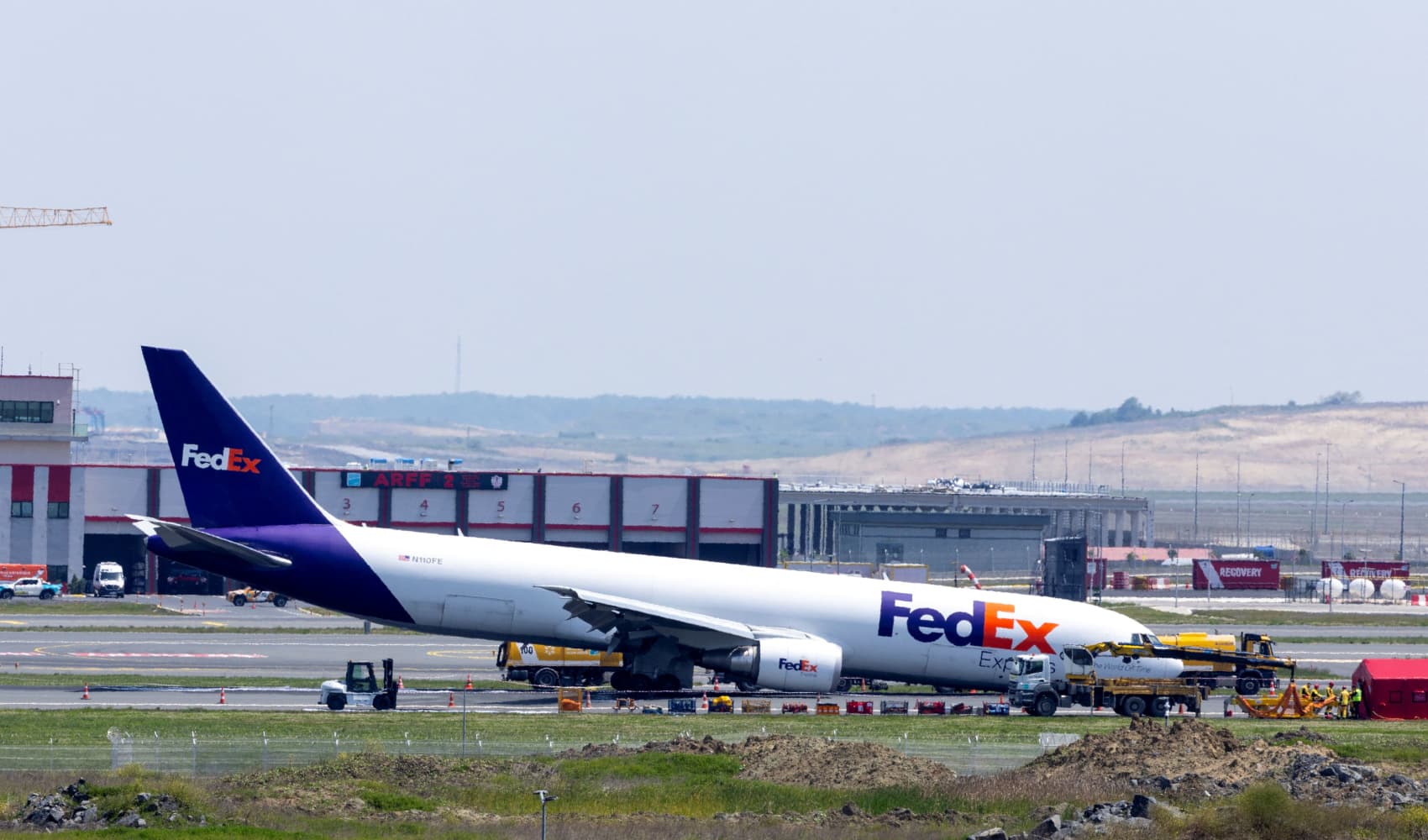
For most Americans, when it comes to peanut butter, only one question is paramount: creamy or crunchy?
What most consumers don't know, is how that choice is shaped by hundreds of years of development through technology, innovation and marketing, that allowed it to become a popular, if not favorite snack in the U.S.
The product, made famous for its unique taste, affordability and adaptability, can be eaten by itself, spread on a sandwich or even spooned into a dessert.
Those factors and more have turned it into a $2 billion industry this past year, according to Circana, a Chicago-based research firm, in just spreadable peanut butter, which averages about $0.20 a serving.
We're making it easier for you to find stories that matter with our new newsletter — The 4Front. Sign up here and get news that is important for you to your inbox.
Peanut butter's longevity in the U.S. boils down to several factors but starts with advancements in technology in the early 1900s with hydrogenation that made transporting the spread possible.
Experts believe farmers in the southern U.S. had been grinding peanuts into a paste in the 1800s for years before it reached widespread success.
It was Peter Pan, originally known as E.K. Pond, that became the first brand to commercially develop peanut butter in 1920, sparking the way we eat peanut butter today.
Money Report
The brand, using a patent from Skippy creator Joseph Rosefield, was the first to use hydrogenation to ship off the spread and revolutionized the industry forever.
Skippy followed soon after in 1933 and Jif in 1958. Skippy was the leading peanut butter brand in the U.S. until 1980, a title that now belongs to Jif.
Peanut butter holds a 90% household penetration rate, comparable to other grocery staples such as breakfast cereal, granola bars, soup and sandwich bread, according to Matt Smith, VP of Equity Research at Stifel Financial Corp.
Circana says the top three brands, the J.M. Smucker Co.'s Jif, the Hormel Foods Corp.'s Skippy and Post-Holdings' Peter Pan account for two-thirds of the market share with Jif at 39.4%, Skippy at 17%, and Peter Pan at 7%. Private-label brands such as Costco's Kirkland and Target's Good & Gather, plus Trader Joe's, Whole Foods and Kroger's own versions that make up 18%, as of July 2023.
The market share leader, Smucker's, reached $453.4 million in net sales in its consumer foods section in its Q4 earnings, where Jif falls in, and holds another secret weapon: its Uncrustables brand, consisting of frozen, pre-made PB&J's.
"Over the past 10 years, the brand went from $126 million in sales to over $600 million and the company expects sales to reach $1 billion by 2026," said Smith. "The growth in Uncrustables has been so robust, and the brand has grown to the size that it is, adding one percentage point to Smucker's overall sales growth," he added.
Senior Vice President and General Manager of Smucker's consumer foods division, Rebecca Scheidler, says the brand has been showing double-digit growth for multiple years in a row, held back only by the capacity of the company's plants.
"Our primary unlock for future growth is increased capacity," she said. "You'll see in 2019 we actually doubled our production footprint and capacity with the addition of a plant in Longmont, Colorado. And then we recently announced that we're building another third facility in McCalla, Alabama, which will double the size of Longmont," she said.
Though Smucker's growth has been unparalleled, Hormel Foods also boosts million-dollar sales in its retail division, the category its peanut butter brands fall under, reporting its 2023 Q2 net earnings in the section as $1.9 million.
Hormel Foods, well-known for Spam, acquired the brand in 2013 from Unilever for its first venture into non-meat proteins. Smith says they've helped grow the brand consistently ever since.
"That was a real pivot for Hormel into kind of a non-meat center of store product to help evolve the company into a more consumer product-facing company. They hold near 20% of the market share today behind that Skippy brand," said Smith.
"There was a lot of untapped opportunity with this brand. And for us, really Skippy was and is a big focus," said Ryan Christofferson, the senior brand manager for Skippy at Hormel Foods.
Christofferson says Hormel Foods' next endeavors are focused on new ways to expand the already-beloved brand into a range of different products.
"Peanut butter is something that always has been popular for decades with consumers but is continuing to grow not just as a product in a jar, but in new formats and in new places. So, people are thinking about, 'how can I get more peanut butter into snacks, into desserts and other places, into cooking sauces," Christofferson said.
For such a storied product, there aren't many risks.
In 2022, a salmonella outbreak caused Smucker's to recall Jif peanut butter products after the contamination was found across 12 states. Though it was a setback, Smucker's says it did not have long-term effects.
"We were already back at a number one position," said Scheidler. "And we just continue to see growth as we look into the future as well," she added.
When it comes to allergies, experts aren't too worried about their effect on the peanut butter market, only that it could corrupt its link with the next generation.
"The concern I have is that if they're not eating peanut butter at school, they're not going to develop that lifelong emotional attachment to it like my children did and like I did," said National Peanut Board President, Bob Parker.
According to the FDA, about one million children in the U.S. suffer from peanut allergies, and only one out of five will outgrow it. Some school campuses, both K-12 and colleges across the country, have banned the snack completely or in certain spaces.
"It's become more of an issue in the last 10 years or so, but the categories continue to grow even as the prevalence of allergy or the reporting of the prevalence of allergy has picked up. So while it's a threat, it's certainly not impacting sales," said Smith.
Food giants Smucker's and Hormel Foods are concentrating on innovation either by product count, development or international reach.
"We have pretty aggressive growth plans in overseas markets for this brand," Christofferson said.
Hormel Foods is eyeing countries that are already curious about the snack, such as Mexico, Canada or China, where Christofferson says they are meeting consumers' needs differently than in the U.S.
"It's especially used as a cooking ingredient in recipes and in sauces in Asian cuisine," he said. "We've launched certain innovations specifically in Asian markets to help enable that type of cooking use for peanut butter. And we'll continue to look to tailor our product and our marketing messaging to the consumers in different parts of the world based on their needs and the way that they eat," said Christofferson.
"China is beginning to consume peanut butter. And if we could just get them to consume one pound per capita of peanut butter, they would far surpass what we consume," added Parker.
Domestically, Americans eat an average of 4.25 pounds of peanut butter per capita, a figure that increased temporarily during the Covid-19 pandemic, according to the National Peanut Board.
"Peanut butter and peanuts as a whole reached a record per capita consumption level of 7.8 pounds per capita," Parker said. "And during COVID, when people were hugely stressed and were having to work remotely and children were having to go to school remotely, they took refuge in peanut butter. As odd as that sounds, it was the ultimate comfort food for many Americans that reminded them of happier times of childhood," Parker added.
"We saw adults go back to it. It was an easy, quick food to make between Zoom calls and to help their kids make a quick PB&J. As the family came together in the middle of the day, we saw that it introduced this love and affection for peanut butter to children who will hopefully carry that love and affection for peanut butter into [their] lifetime," he added.
Peanut butter's endurance through these last hundred years and potentially the next hundred is rooted in this, perhaps its most powerful tool: nostalgia.
From eating a PB&J sandwich on the playground, to celebrating a birthday with a peanut butter pie, those memories have allowed it to cement itself permanently in society — and even space.
"When you look at the composition of most school-aged children's lunch boxes, 75% of them are including PB&J," said Scheidler.
With that in mind, both Smucker's and Hormel Foods have to be stewards for these legacy brands.
"We're holding on to what made these brands great, what people love about these brands today and then finding ways that we can continue to integrate it into consumers' lives so that it's not only great today, but it's great for the next generation of consumers," Scheidler said.
Watch this video to learn more.
Correction: Smucker's reached $453.4 million in net sales in its consumer foods section in its Q4 earnings. An earlier version misstated the amount and quarter.






